The GoodyGood Blog
Meet some new Gold Star GoodyGoods
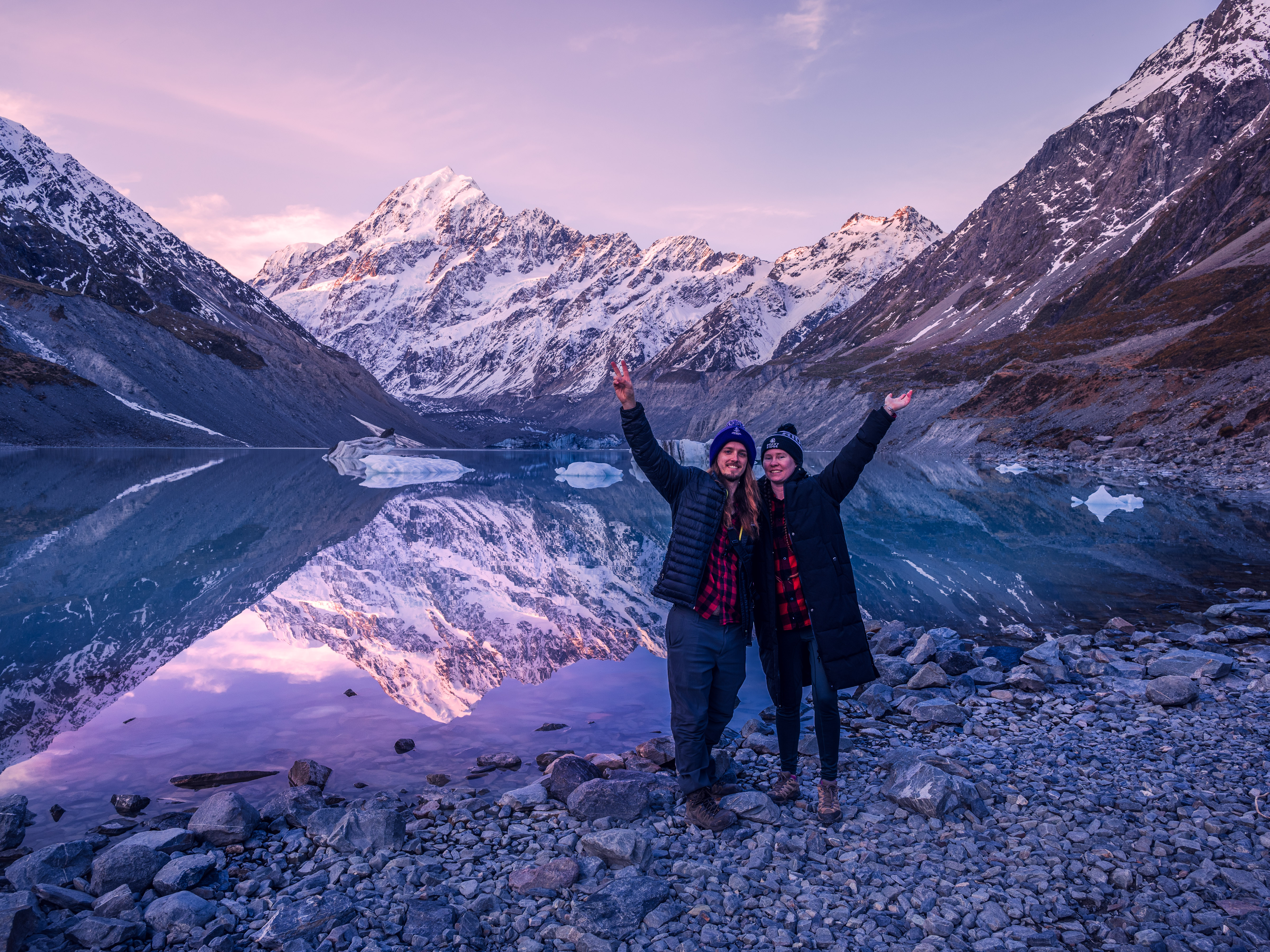
We love hearing from our customers, so were delighted recently when some new GoodyGoods got in touch to tell us a bit about themselves. Nathan and Tiff are a couple of Aussies in New Zealand having a go at travelling and doing vanlife as sustainably as they can. We loved reading their blog - check it out here. Here’s them in their own words:
We are Nathan and Tiff. Two avid lovers of a different kind of travel. Tiff works as a locum radiographer, and Nathan runs our budding travel blog and social account to fund our trips and bring awareness to the negative impacts of the travel industry. We have always loved to travel. When we worked full time, we used two cars, went on multiple day trips, weekend trips and short trips overseas. It dawned on us how much of an impact this was having on the world we loved to explore. We decided to shake up our lives and embrace slow travel and vanlife to reduce our impact, but still get to do the things we love about travelling.
Our blog The Road Less Written is where we share our story to inspire other travellers to take a more eco-conscious road to travel and life as a whole. Instead of taking multiple flights in a year to see different places in the world, we are staying put in one place and slowly getting to see a lot more of it. We live differently, according to what we want from life and that makes it easier for us to prioritise being eco-friendly. We shop locally as much as possible, make pasta from scratch in the van, use solar powered everything and even compost our food scraps thanks to the handy app ShareWaste.
Taking life slowly has given us more time to ride and walk places instead of driving everywhere. When we do need to drive, we want to lessen the impact as much as we can, and that’s where GoodyGood came in. There’s no perfect solution to a completely eco-friendly motorhome. We feel less guilty about driving our home now that we can offset its emissions.
Have an overwhelming feeling of impending doom-scroll? Here’s our Top 5 Climate Newsletters to subscribe to

Staying informed and engaged about climate change is really helpful for taking climate action, but it’s also really hard to avoid sliding into a doom-scrolling habit. Newsletters are an awesome way to pick and choose content that’s useful and evidence-based, rather than click-baity and anxiety-inducing.
In this blog, we share some of our favourite newsletters to subscribe to, all of which are on Substack. Yep, we love Substack. It gives writers a way to get paid without relying on advertising (which relies on click-baity stories…). All of these newsletters have lots of free content, but if you choose to pay for a subscription it means the writers will get paid too.
Created by Hannah Ritchie, a data scientist who does lots of work for ourworldindata.org. Great for the nerds among us who love a good graph! If you’re looking for an evidence-based, data-driven approach to understanding how we build a sustainable world, this is the one for you. We love how Hannah goes really deep into questions that we might have about things like the sustainability of electric cars, what needs to happen for alternative proteins to make a big difference to climate change, or the cobalt that’s used in batteries.
New Zealand-based and a great read if you're interested in doing something about climate change in terms of mobilisation, campaigning, and policy change. This Substack is less about news or climate education, but more about making it more accessible for you and I to take part in demanding top-down change. We love how every newsletter suggests different actions we can take in five minutes, 15 minutes or 30 minutes. Also worth reading their back-issues on climate doomerism too.
Local climate journalism that covers climate (and wider environmental) issues in-depth from a New Zealand perspective, written by award-winning journalist Ellen Rykers at The Spinoff. Delivers on its promise as a great way to stay informed and inspired about our natural world, its challenges, and more importantly, the solutions. We love the local, positive feel of this newsletter and how it covers stories about Kiwis finding ways to do their bit about climate change.
US-based Hothouse is original climate journalism with a focus on ways to act. As a climate solutions newsletter, its aim is to dig into the evidence, figure out what works, and deliver the news to your inbox. Every month or so, Hothouse publishes deep dives on a variety of topics, like seafood, investing, changing careers, electric vehicles, funerals, and organic agriculture.
Sometimes it's okay to not have a solution for climate change and just be a bit angry! This is the newsletter for that. Impassioned, scathing and often-funny reporting by US-based Emily Atkin. Heated World doesn’t hold back, and we love it for that.
A lot of climate action requires at least a bit of knowledge and motivation. Getting some healthy climate content in your inbox can help you stay informed, inspired, and connected with a global community of good eggs with good ideas. It can also come in handy for the ol’ water cooler chat. Whatever flavours of climate action you prefer, there's a newsletter that’s perfect for you.Sorry, we couldn't find the post you were looking for.
Should I Buy an EV?
Fun fact: In July this year, electrified vehicles (hybrid, plug-in hybrid and battery-electric vehicles) outsold internal combustion engine (ICE) vehicles for the first time ever in New Zealand. Battery-electric vehicles (BEVs) made up over 27% of new car sales that month. We’re pretty stoked about that!
Cars and other passenger vehicles make up about 27% of New Zealand’s emissions, so deciding whether to buy an EV has become an increasingly relevant question for people who want to lower their carbon emissions.
While the transition from ICE to EVs might seem like a no-brainer when you’re thinking about a whole country, it becomes a bit more real when you’re trying to work out what to do as an individual. It’s a crazy-complex topic and everyone’s situation is different. Here’s some thoughts about the benefits and considerations of switching to an EV…
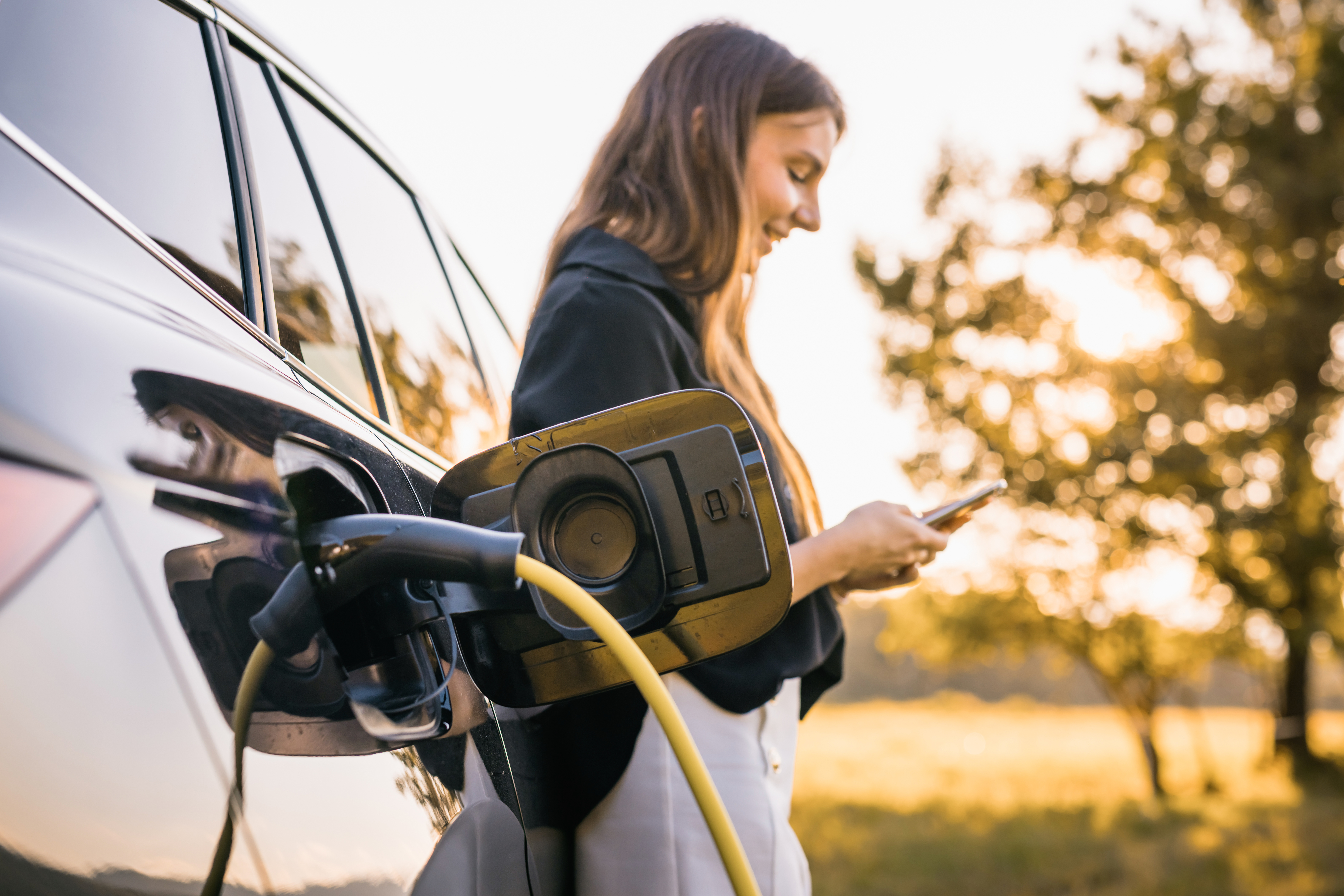
Benefits of buying an EV
Environmental Impact: One of the main reasons to buy an EV is that the environmental impact is way lower than your average petrol or diesel vehicle. EVs produce zero tailpipe emissions because they don’t burn fossil fuels, and they contribute to cleaner air quality in urban areas. The emissions involved in making an EV are higher than for a petrol car, but the emissions payoff is pretty quick once you start driving it, especially if your electricity mostly comes from renewable sources, like they do in New Zealand. Hannah Ritchie has done an amazing job of crunching the numbers on this topic. Pro tip - buying an EV with a smaller battery is better for the planet than buying one with a big battery.
Cheaper to run: EVs are more energy efficient than ICEs, which means they’re cheaper to run. Electricity is generally a cheaper form of energy than petrol or diesel, and EVs use less of that energy to move. Most of them require less maintenance because they have fewer moving parts.
Zoom zoom: EVs are known for their speedy acceleration and instant torque, which makes for a silky smooth and fun drive.
Never go to a gas station again: If you can keep your EV charged up by plugging it in at home, you’ll never have to go anywhere to refuel it. Goodbye gas station.
Financial incentives: The New Zealand Government offers rebates of up to $7,000 for buying a fully electric vehicle. That’s a nice chunk off the bill! On top of that, a number of banks are offering special ‘green’ loans or home loan top-ups at cheaper rates for things like EVs and home solar panels.
Tech wizardry: The EV industry is evolving all the time, with really quick developments in battery technology, charging stations, and autonomous driving capabilities. Some EVs can deliver a good amount of power from a built-in power outlet, so you can plug some appliances off them when you’re camping, or at home if there’s been a power cut. Some of them even make futuristic sounds created by movie composers. Owning an EV is basically like living in the future.
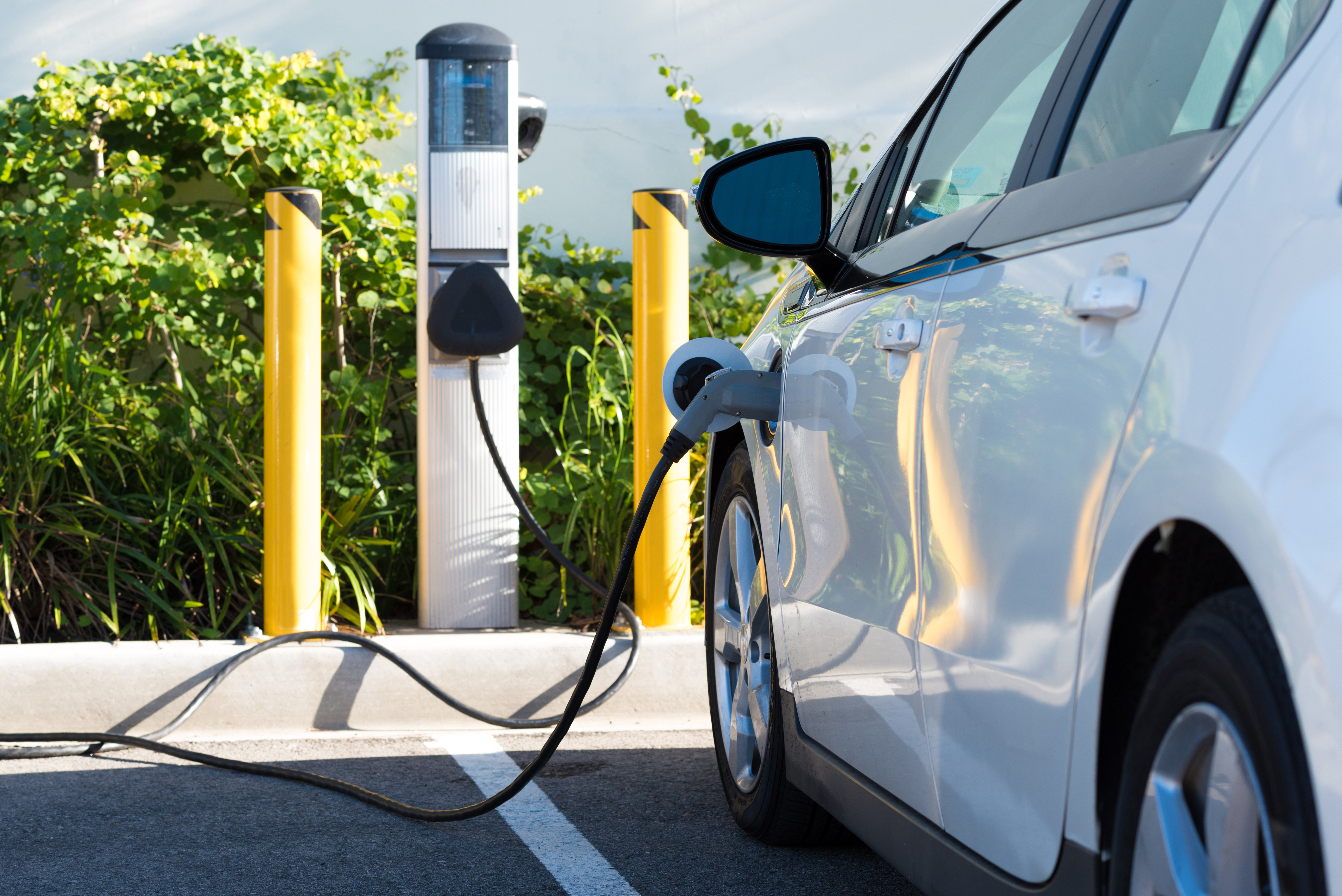
Considerations before buying an EV
OMG so expensive: While the running costs of EVs are lower, the initial price is higher than an equivalent petrol car. There isn’t that much choice for older, secondhand EVs either, so if you’d normally be looking at a secondhand car, you quickly find yourself at price points that are way higher than you would normally consider. Especially if your fam and floof don’t quite fit in a Nissan Leaf.
EV prices are slowly coming down though and, depending on how much you drive, the amount you save on fuel and maintenance can help recoup the upfront cost. Check out the Gen Less Vehicle Comparison Calculator if you want to weigh up your options.
It’s another thing to charge: If you’re one of those people whose phone seems to be constantly low on battery because you forgot to plug it in at night, then owning an EV might be a challenge. Charging technology is improving, but charging it on the go takes longer than filling your car up at a gas station. Fast-charging stations can provide a decent charge in a short time, but for longer charges, you'll need to use your noggin to avoid getting caught short. Or charge it at home.
Charging Infrastructure: Access to convenient and reliable charging stations is crucial for EV owners. While charging networks are expanding, you do need to think about where you can charge up, especially on longer trips. Demand can be high in peak holiday season too. There are plenty of apps to help you out though, and for day-to-day stuff, home charging solutions - like installing a Level 2 charger - can be a total game-changer.
Range Anxiety: Range anxiety is the fear of running out of battery while driving, which is a pretty gnarly situation. Modern EVs have made epic strides in extending their range, but it's still important to plan longer trips and consider charging locations along your route.
Battery Degradation: Over time, an EV's battery capacity will degrade, resulting in slightly reduced range. However, most manufacturers offer warranties that cover a certain level of battery degradation, so it’s less of an issue than you might imagine.
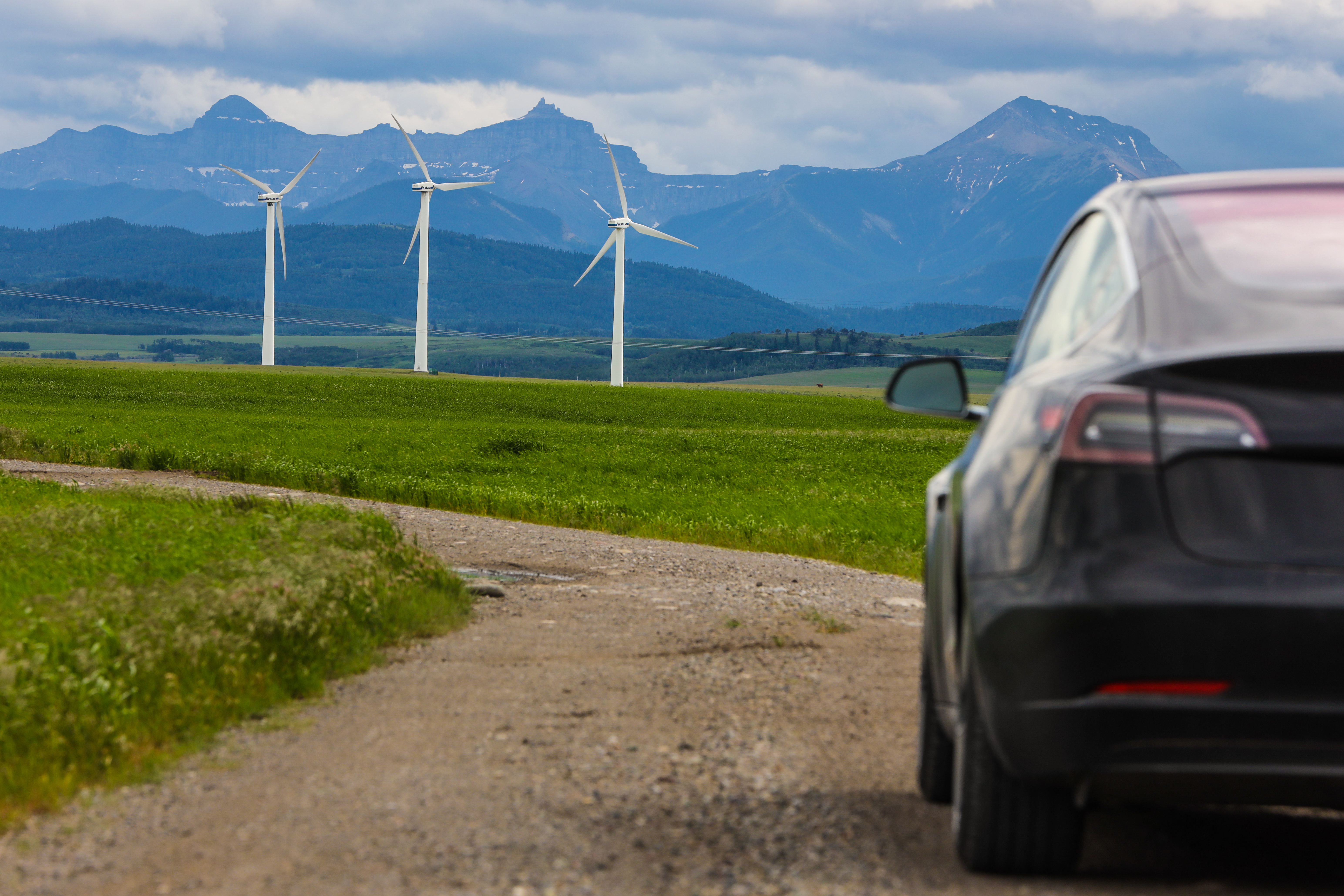
So what to do?
Whether to buy an EV or not depends on what works best for you. There’s heaps of factors, like how much you drive or need a car, budget, and location. While EVs offer all kinds of benefits, they also cost a lot to buy and the options available might not do the things you need your vehicle to do.
If you want to reduce your transport emissions, and are short on cash, there are loads of other ways you can reduce your climate impact. You could replace your car with something cheaper that just uses less fuel, like a hybrid, and replace some of your driving time with cycling, walking or public transport. Or if you live in an urban area, you could replace your car with an e-bike and rent an EV when you need a car.
Making progress that’s sustainable for you and your pocket is still progress. If buying an EV isn’t on the cards for you yet, keep adding the little things that are achievable, like cutting out short car trips, biking, busing or bi-pedalling (walking) more. Every little bit helps!
By the way - if you do have a human in your life who will need to have their fossil fuel car pried out of their cold, dead hands, did you know we can help you offset their ute for them?
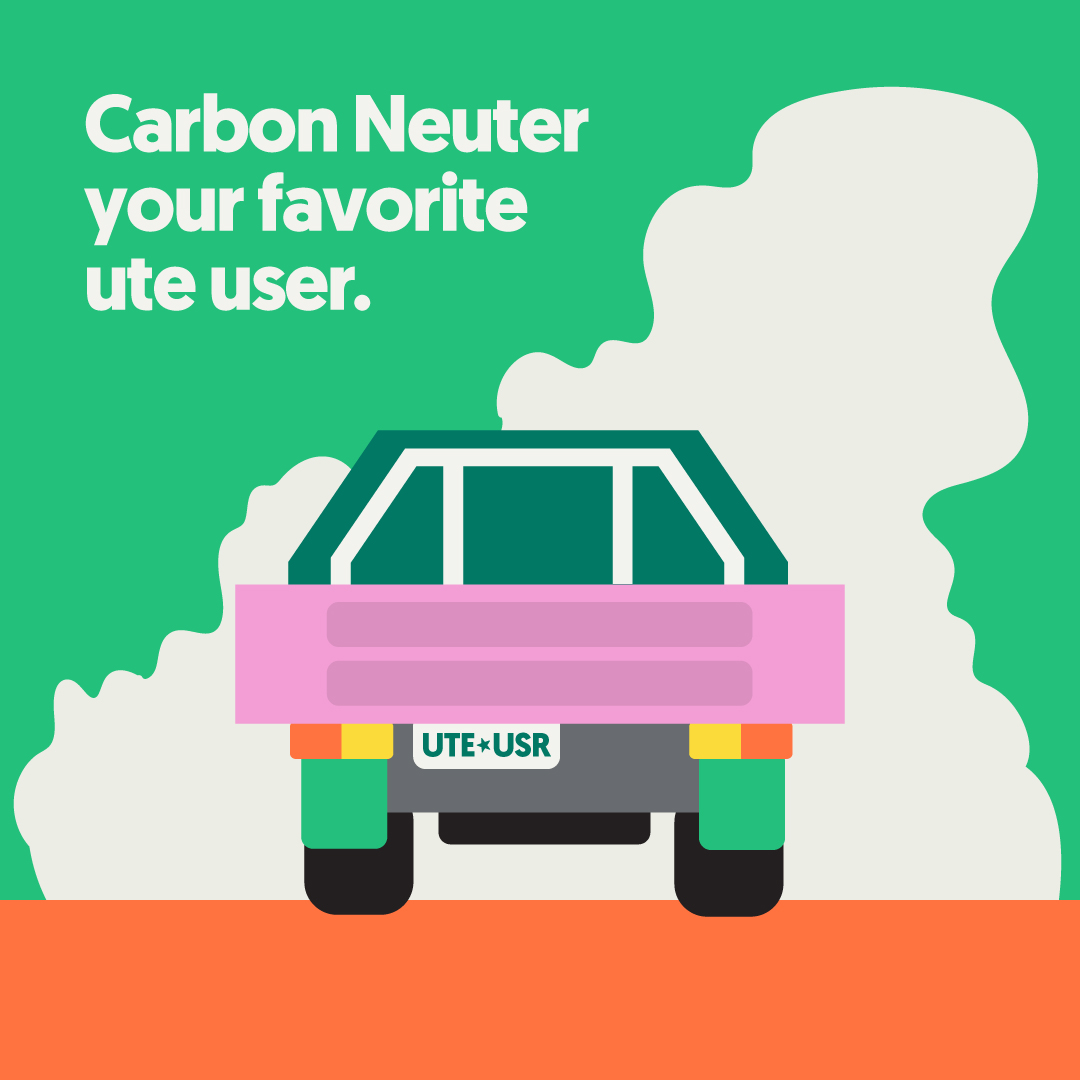
Reasons to be Cheerful #1
For lots of us, climate change feels totally overwhelming, and the actions of individuals can feel like too little, too late. That’s understandable, but at GoodyGood, we’re not big on sticking our heads in the sand - we’re more into sticking our hands up. We believe very strongly that if everyone did just a little bit, it would help a lot. That’s why we’ve made it easy and affordable for anyone to offset their carbon emissions. It won’t solve climate change on its own, but it’s one small thing almost anyone can do, and it makes a positive difference.
.jpg?alt=media&token=ea358fae-aeb7-40db-8f2e-db15aece02ac)
The Rise of Solar
Reading the news can bring on feelings of impending doom when it comes to climate change. There are plenty of things to be positive about though, like the incredible rise of solar power.
According to TechXplore, the world created more new solar capacity in 2023 than every other power source combined, and at the current rate of growth, solar has the potential to displace fossil fuels entirely by 2050. That’s huge!
Solar’s increasing affordability and efficiency have made it a top choice for individuals, businesses, and governments worldwide. Solar energy installations are skyrocketing, with annual capacity additions setting new records year after year. This surge in solar power adoption has resulted in a significant reduction in greenhouse gas emissions, and it’s created thousands of new jobs. On top of that, solar power systems are pretty low-maintenance, which means they’re both sustainable and cost-effective.
Technological Innovation
The rapid growth of solar power has sparked a wave of technological innovations, driving the industry forward. Researchers and engineers are continuously pushing boundaries to boost solar panel efficiency, storage capacity, and durability. Exciting breakthroughs in material science, such as perovskite solar cells, hold a lot of promise for even-higher energy yields, and improved energy storage technologies (like lithium-ion batteries) are enabling solar energy to be available round the clock. As solar power develops, crazy new technologies such as floating solar farms, solar roadways, and transparent solar panels are being explored.
.jpg?alt=media&token=ef35333e-d7df-421a-91b1-e4fc220d2c7d)
The Challenge
One of the tricky things for solar power is the large cost of setting it up. That’s not as big a problem for places like Australia, but for countries with less public cash, it can be a bit tricky. That’s why one of our main carbon offsetting projects is helping to fund solar power in Chile, where they need more and more electricity generation for people and businesses. Unfortunately, even though Chile has a choice environment for solar power, a lot of the new electricity generation being planned is for coal, purely because it’s cheaper to set up (though more expensive in the long run).
Run under the United Nations Framework Convention on Climate Change (UNFCCC), the project we support helps to build a connected grid of solar generation sites, so that more of Chile’s growing need for power is met by clean, renewable sources, rather than stuff that has a big climate impact. As more of these sites get built, they can replace fossil-fuel based power plants, helping reduce pollution even more.
The Future
The boffins reckon that the world needs somewhere between double and triple our current supply of solar energy if we want to totally replace fossil fuels (you might expect it to be more, but electricity is super energy-efficient!) At the current rate of growth of roughly 20% per year, that could be doable within the next ten years. The world has enough resources, space and manpower to make it happen, we just need the powers-that-be to move things in the right direction.
Take a moment to bask in the warmth of positive news about solar power. It’s clear that solar energy is a vital part of our sustainable future. From its key role in reducing carbon emissions and combating climate change, to its economic empowerment and job creation potential, solar power is a proven game-changer, a win for nature, and a no-brainer.
.jpg?alt=media&token=87b23821-5a44-4c8b-b02b-2b515ada0437)
Funding solar power in Chile is available as part of our Mixtape and Global plans. Sign up today if you want to make an impact.
Climate action anyone can do
Help fund systemic solutions to climate change
Climate change is a big global problem. Individuals doing their bit helps, but systemic changes also need to happen both locally and internationally to address it. You can play a role in these big changes by helping fund projects that practically implement them, like replacing fossil-fuel electricity generation with renewables.
Often, these projects need to close a funding gap by selling the CO2 reductions they make in the form of carbon offsets. For an individual, navigating the carbon offsets marketplace can be tricky and complicated. That’s where we come in.
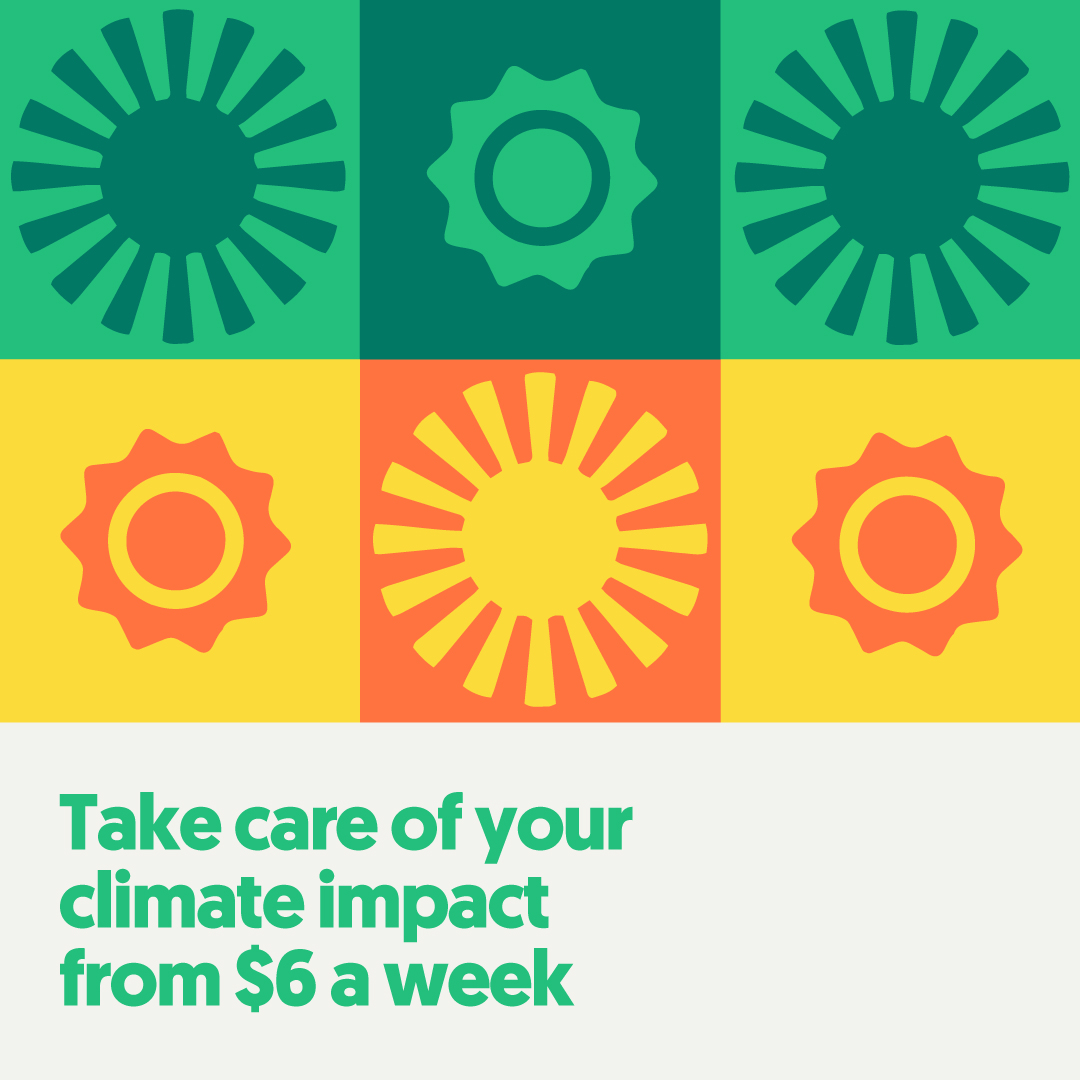
Good carbon offsetting can help fight climate change
We make it easy for you to fund projects that are making real, certified carbon reductions. The team at GoodyGood does all the homework researching projects and evaluating them on a range of quality criteria. We handpick the best of the bunch and buy these high quality carbon reductions in bulk.
We break the offsets up into affordable packages for our subscriptions and one-off products. You get a specific amount of carbon reduction with every purchase.
We add a small margin, so we can keep making it easy for everyone to support carbon reduction.
The more people that buy carbon reductions, the more projects that can happen. That’s good for the climate, that's good for everyone.
You can always add more climate action
GoodyGood is a simple, easy way to do more about climate change, whether you're already doing a lot, you're just getting started, or you're somewhere in between.
More is more when it comes to climate action. GoodyGood is about making it fun and accessible for you to do more, and to celebrate the progress you make.
How much CO2 does my barbeque produce?
Are you serious? Do I really need to offset my BBQ?
Summer is (almost) here in Aotearoa! Along with sunburn, sitting around in wet togs for far too long and forgetting what day of the week it is in those magical few days after Christmas, sizzling some snarlers on the old barbeque is a ubiquitous feature of a great New Zealand summer.
At GoodyGood, we help you take care of the climate impact of things that bring you joy.

So this summer, we've introduced a one-off product to take care of the climate impact of your summer BBQs.
‘Hullaballoo for your BBQ’ is all about celebrating what’s awesome about the summer BBQ. Friends and family getting together and enjoying each other’s company, or awkward workmates seeing their boss wearing shorts for the first time. It’s about connecting, and sharing.
You might be wondering why on Earth you’d need to offset your BBQ. Is your barbeque bad for the environment? Or maybe you’ve got deeper, nerdier questions, like what are the CO2 emissions from your barbeque, or would a gas barbeque be better than a charcoal grill when it comes to carbon pollution?
Well, the short answer is yes, cooking food by burning fossil fuels does make carbon emissions and yes, there is a difference in emissions between a gas or charcoal BBQ, but...
the biggest difference you can make is changing what you put on the barbeque.
Let’s run the numbers…
When you take care of the climate impact of your summer barbeques with GoodyGood, we offset half a tonne of CO2 for you, using one of our many awesome climate projects. That covers you for a 9kg bottle of LPG and about 15kg of meat.
The assumptions our backroom nerds have used to work this out are that using 1kg of LPG produces about 3kgs of CO2-equivalent emissions and that the average kilo of meat you’re grilling makes about 30kgs of CO2.
That’s right, a kilo of meat can create more CO2 than a whole LPG bottle.
So while a charcoal BBQ produces about 3 times the CO2 of a gas BBQ, if you love that smoky charcoal flavour, you don’t have to give it up to reduce the climate impact of your barbeque. Just change what you’re grilling.
Beef has really high emissions, as does lamb, while other meats like pork and poultry have lower emissions and plant-based options are lower again. Way lower. Carbon Brief has a great summary (GoodyGoods love a good graph!) and some University of Otago academics have researched the carbon footprint of local food more closely too.
Putting on delicious plant-based or vegetarian barbeque food would slash the carbon footprint of your next grill party, but if you can’t quite get your carnivorous family across the line on Vegan Lyfe, just remember these three easy peasy steps:
Less beef and lamb
Some pork and poultry instead
Add more plants.
Was that a haiku? We’re not sure.
In the meantime, you can make a Hullabaloo for your BBQ (that’s GoodyGood-speak for offsetting your summer BBQs) by adding it to your climate mix here, or just start a conversation by sharing this post.
Meet our furry friend Pamuk
Say hola to our friend Pamuk

Pamuk was named our Pet of the Month for August. He lives in Madrid, Spain and is one year old. His human parent Renee says,
“Not to ruin his street cred, but he is secretly still a cuddly puppy even though he weighs 30 kilos".
Pamuk’s favourite food is frozen strawberries and he definitely wants to help save the planet as being outside enjoying nature is his favourite activity. He loves hiking, swimming, and chasing scents and has recently discovered a penchant for socks.
Renee made Pamuk a GoodyGood by offsetting his climate impact with us. If you have a furry friend in your life, you can make them a GoodyGood just like Pamuk by offsetting their climate paw print with us.
Why we don't use a carbon footprint calculator
Throw away your carbon footprint calculator
You might have noticed that at GoodyGood, we don't have an online carbon footprint calculator for you to work out your personal carbon emissions. We designed our subscriptions to cover the average carbon emissions of one person in New Zealand (our launch market), which is estimated to be a bit over 8 tonnes/year.
All of our subscription plans offset a nice round 12 tonnes/year and we don't offer plans that offset more, or less. Instead, we decided to throw away the carbon calculator, offset the same amount of carbon dioxide for every GoodyGood subscriber and celebrate the individual climate actions our customers take. One tonne a month is enough to cover the average carbon emissions for a person in New Zealand, the United Kingdom and most of the EU (plus a bit more for good measure). It's also enough to cover about two-thirds of the average carbon emissions for someone in the USA, Canada or Australia.
Why did we do this? Because it's simple and because we're all about progress over perfection.
The sneaky thing about Co2 is that it's everywhere, it's invisible and it's really really hard to know how much each of us create by going about our daily business. There are so many variables and assumptions, like the type of car you drive, your diet, your habits at home, the mix of energy you use or have access to, where you live, and so on. At the end of the day, an online carbon footprint calculator will only give you an estimate, so why argue about the numbers? Too complicated!
Sure, it feels nice to tick a box that says, "I bike to work" on a calculator and yes, you might fly a little bit less than your travelling pop star neighbour, but does it really matter that you're doing your bit by offsetting your 5.6 tonnes, but old mate next door should be offsetting 9.3 tonnes?
At GoodyGood, we say that climate action is like toppings on an ice cream. You can never add too much. The amount you offset shouldn't impact whether you decide to bike to work, cut back on meat or influence your workplace to cut emissions, so we think that works in reverse too. We'd rather you spend your energy doing more and celebrating the action you do take than getting wrapped up in dodgy accounting.
There's lots of different ways to help beat climate change. None are perfect by themselves, but the good thing is you can pick more than one. Or all of them! When it comes to climate action, more is more.
How about giving us a go, or if you have any questions, dropping us a line?
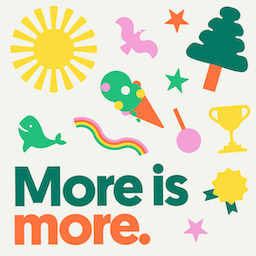
Six Barrel Soda and GoodyGood
A wonderful Wellington collab
Wellington is a great place to start a business. Mike, John and James started GoodyGood by selling carbon offsets from a tent down at the Wellington Harbourside markets and since those days we have had heaps of support from other businesses and people around Wellington. Like local soda legends, Six Barrel Soda.
GoodyGood teamed up with Six Barrel Soda to offer their customers a $10 GoodyGood voucher and a native seedling kit to anyone that ordered from their website in September 2022.
We're always looking for ways to celebrate positive environmental progress at GoodyGood. Our mates over at Six Barrel Soda are doing some cool things by making real fruit syrups instead of industrial soda in PET bottles.
Here are a few other small sustainability actions they take at Six Barrel HQ:
They deliver soda around Wellington on bikes using their mates NoCarCargo
They accept returns on glass bottles for recycling at their Cellar door
They use fairtrade organic sugar and other organic fruits where possible
They've just launched a fab new low-waste product for seltzer that saves 50 aluminium cans by packaging the flavour in a dropper!
